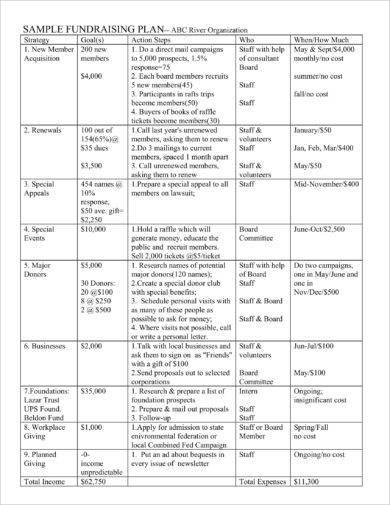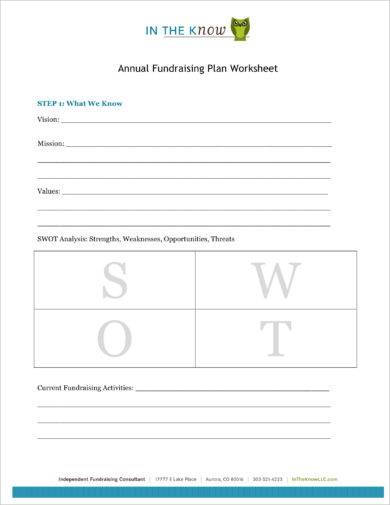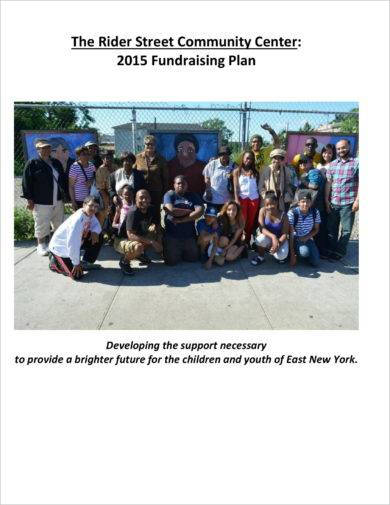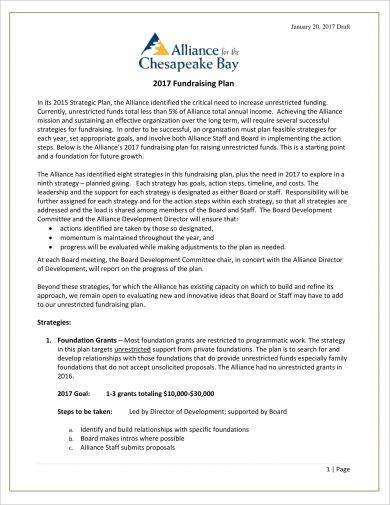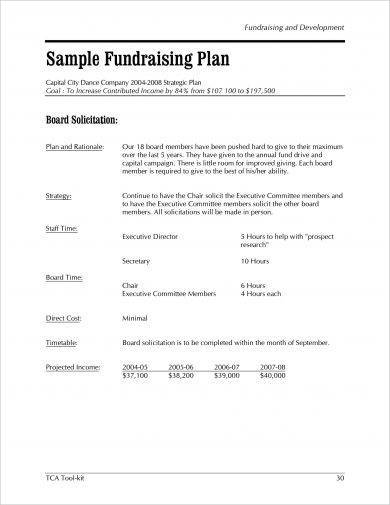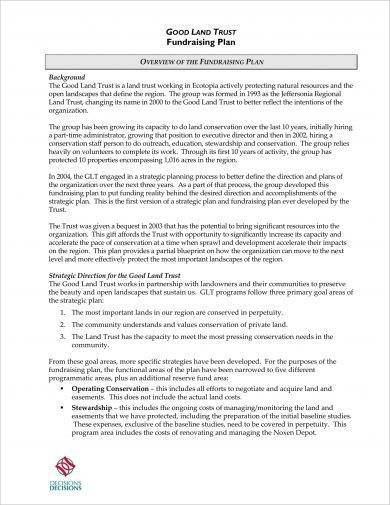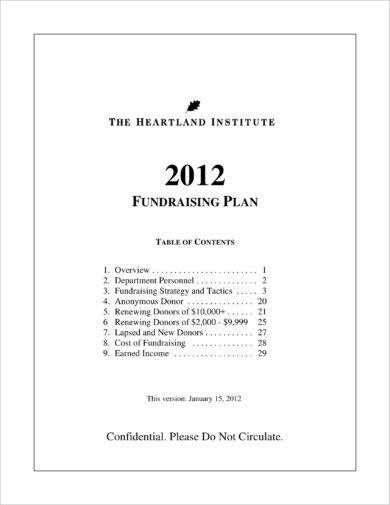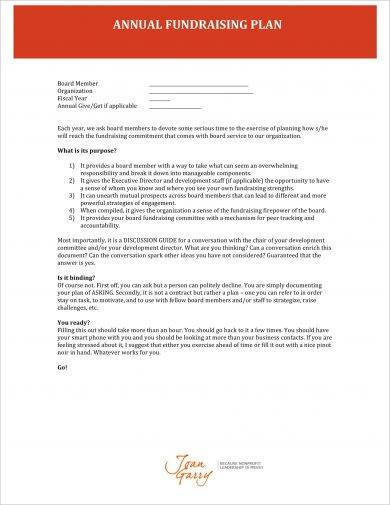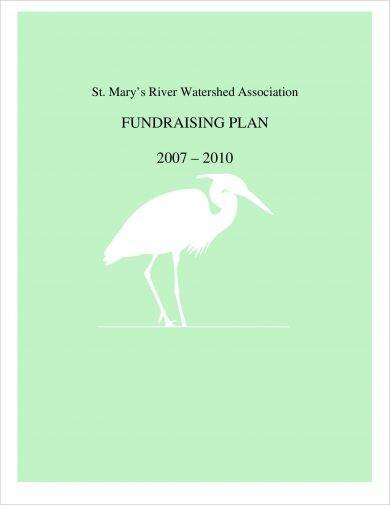12+ Fundraising Plan Examples to Download
When it comes to finances, everybody needs a little help once in a while. That’s why you see so many organizations engage in numerous fundraising attempts. To ensure everything goes as smoothly as you want it to go, it comes highly recommended to have a fundraising plan on hand. To learn more about this, it’s best you scroll on and read what we have to say about the matter. Who knows, you may even end up admiring a fundraising plan template or two from our list.
Sample Fundraising Plan Example
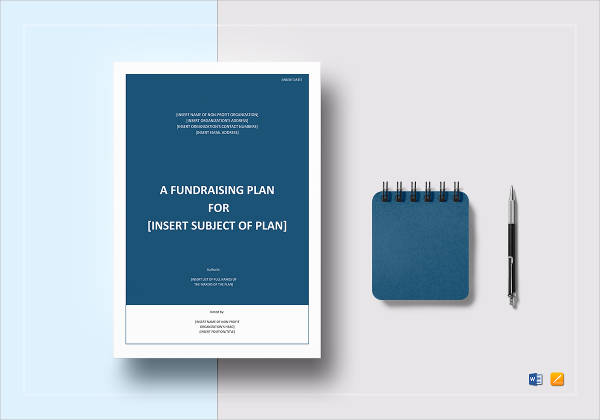
Charity Fundraising Plan Example

Non Profit Fundraising Plan Example

ABC River Organization Annual Fundraising Plan Example
Annual Fundraising Plan Worksheet Example
Annual Fundraising Strategic Plan Example
Community Annual Fund Raising Plan Example
Comprehensive Annual Fundraising Plan Example
Detailed Annual Fundraising Plan Example
Good Land Trust Annual Fundraising Plan Example
Heartland Institute Annual Fundraising Plan Example
Non-Profit Annual Fundraising Plan Example
Organization Annual Fundraising Plan Example
What Is the Importance of a Fundraising Plan?
A fundraising plan outlines both the preparation and execution of an event meant to raise funds. This is important because, with proper planning, every required task has a greater chance of succeeding. It also helps set professional goals that promote growth and create teamwork amongst everyone involved. Raising funds alone can be difficult, so it’s best to have a team where everyone contributes something to the overall effort.
Tips for Raising Funds
When with a fundraising development plan template ready for use, you’ll need to know certain things about raising money. Whether this is for your thriving company or if you’ll need a nonprofit fundraising plan sample, the following tips should help you get your efforts successfully off the ground:
1. Know Your Potential Donors
Before doing anything else, you must determine who your potential donors are. You may create a list and write the names of your family, coworkers, friends, and anyone else who you think might support your fundraising efforts. This will also serve as your list of the people who are on top of your priority when you send formal invitations.
2. Set Specific Goals
After determining your potential donors, you can begin setting goals. Usually, fundraising is for a great cause; hence, you must specify what you want to achieve. Make sure that you have goals that are SMART—specific, measurable, achievable, relevant, and time-bounded—so you will have clear and specific small steps you need to take in order to achieve the goal. You can aim more than what you think you can do, but make sure that it is beyond what you and your future team can accomplish for you might get frustrated when you cannot achieve your planned goal.
3. Use Handwritten Invitations
A professional email is great, but a traditional, tangible letter can lend a special touch to your invitation. You must also send the invitations early so that your potential donor will be informed ahead of time. Once that’s done, you can send emails as a follow-up in the event that they don’t respond to your official letter.
4. Get Creative and Inspiring
Being inspired yourself, it would help your event if you can somehow get others to feel the same way. As you set out to achieve your fundraising goals, you can include a personal message where you can hopefully inspire and motivate its recipients. In fact, this message can even be included in the handwritten letter suggested above.
FAQs
What are some of the most profitable fundraising ideas?
Events like dollar walks, bike-a-thons, car washes, and auctions have been known to raise significant sums of money. The same goes for bake sales and fundraising raffles.
What are the responsibilities of a fundraiser?
Besides the general responsibility of raising funds, fundraisers have to research potential sponsors, craft marketing activities, write the fundraising proposals, and maintain the sponsor records.
What are the common elements of a fundraising plan?
Any fundraising plan should include the following: a targeted communication schedule, specific campaign dates, donor-tracking plans, details of planned special events, and any other marketing plans involved.
Whether it’s an annual fundraising plan, a startup fundraising plan, or any other kind of strategic fundraising plan, you now know how this plan rolls. With your newfound knowledge, you can potentially achieve a level of success that was previously unattainable for you. At this point, all you have to do is decide on what to do next. Will you download an example of a fundraising plan from our selection? Or will you start from scratch? Choose wisely and act decisively today!



